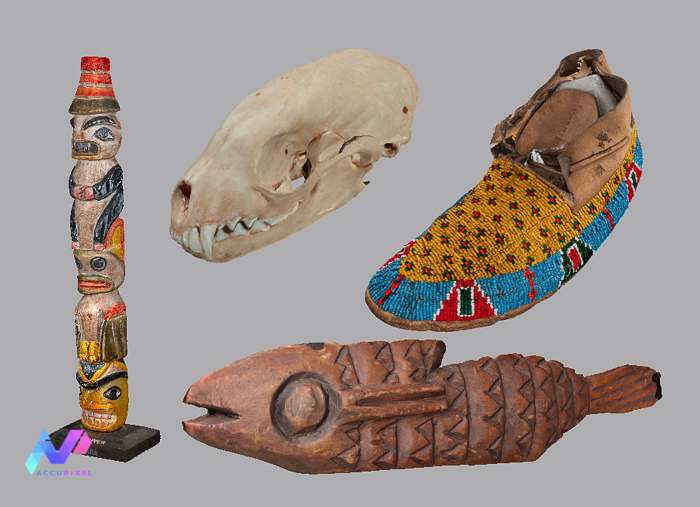Recently Accupixel won a tender for some 3D scanning work. The brief from Hastings Museum was to enable the museum to continue to share its “hands-on” content boxes with local schools. The concept of Photogrammetry scanning for a museum piqued our interest.
Hastings Museum Collection Samples by Deep3D on Sketchfab
COVID has stopped direct interaction in its tracks. But, with photogrammetry and 3D reconstruction sharing the history and interpretation with schools is moving online.
With the work complete we can now share some of the objects from the museum photogrammetry scanning.

The more robust materials – steel helmets, flint tools and fossils – were shipped to our office for processing. The more fragile objects such as this US First Nation birch bark box were scanned on site:
Detail in Texture
With larger objects – such as shipwrecks – the texture can often be overlooked. The size, form and challenges involved in creating an 3D reconstruction of an underwater scene can be enough for the “wow” factor.
With photogrammetry scanning small objects, often in a museum, there is no hiding place. The texture needs to really “sing” and bring the object to life and every image needs to count.
But what is “small”?
It’s subjective, but in these examples all were under 30cm/12in on their longest side. The birch bark box was approx 10cm/4in in diameter and scanning objects such as these needed a Nikon 60mm macro lens. We often overlook prime lenses in favor of their more exotic counterparts, but we do not want zoom or optical stabilization in photogrammetry.
Round in Circles
For work in photogrammetry scanning for a museum, a turntable is a necessity. Placing the turntable inside a light box helps cut down shadows and control the light whilst making the background as neutral/textureless as possible.

With the release of Agisoft Metashape 1.7 a new Align option is available; Exclude stationary tie points.

Working with this option checked resulted in an absolute minimum of manual masking to ensure 100% alignment and a very clean model.
This simple text box saved an unknown number of hours of manual work. But, with 30 museum objects scanned without masking the reduction of effort is likely to be considerable.
If there is demand turntable work will be added to our Agisoft Endorsed Metashape Standard Course soon. Most probably as a standalone module.
Summary of Photogrammetry Scanning for a Museum
Additionally, digital preservation via photogrammetry is something we apply to a serious road collision, an underwater shipwreck or an exploratory excavation trench. Recording at such a fine level of detail lets us continue interpreting and learning long after the trench fills in or the tides shift the sands on the wreck.
Previously the objects were only available to a small group of children at a time. Nothing beats hands-on. However, photogrammetry is a very close alternative and the number of people who can view and learn at the same time is – for all practical purposes – unlimited.